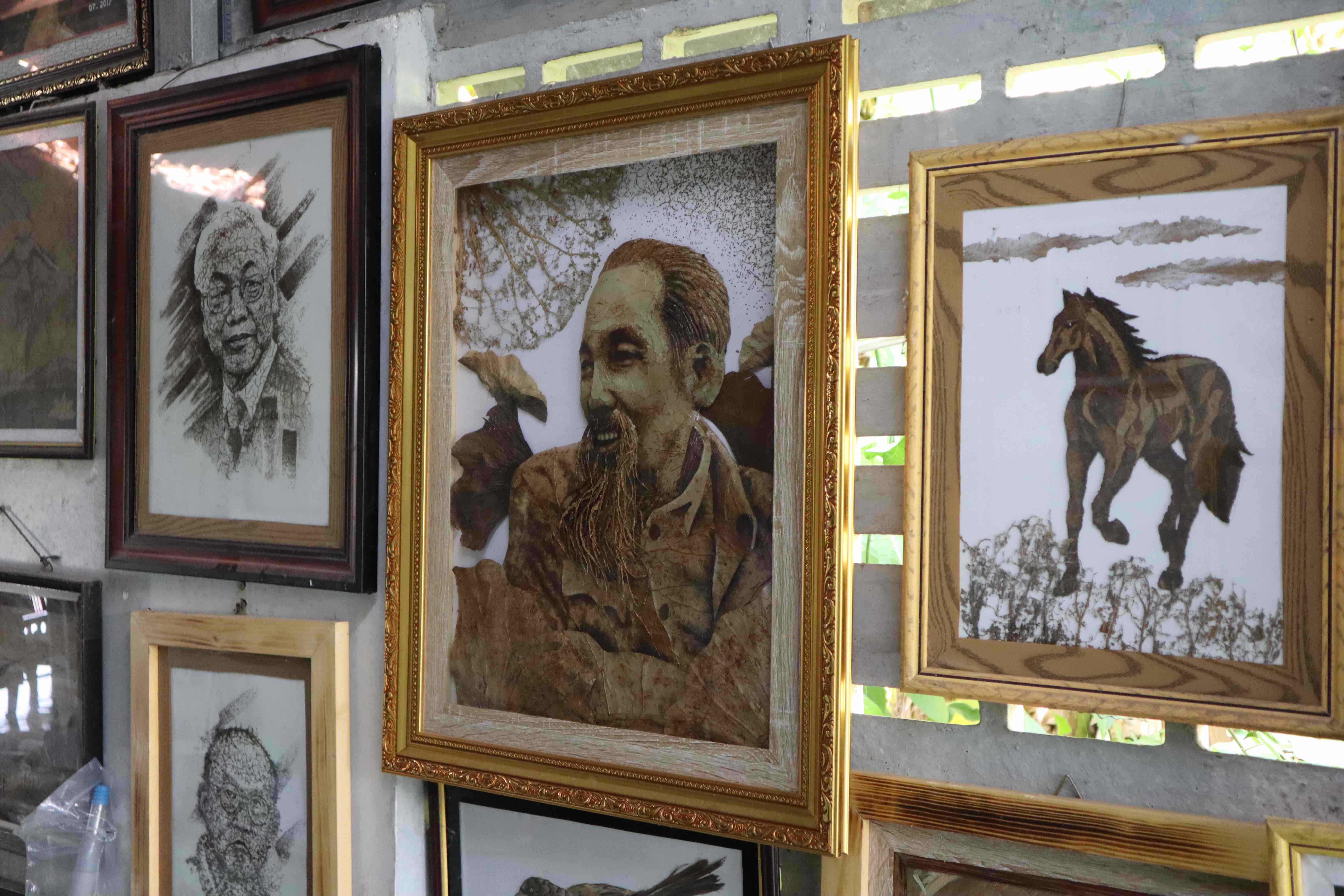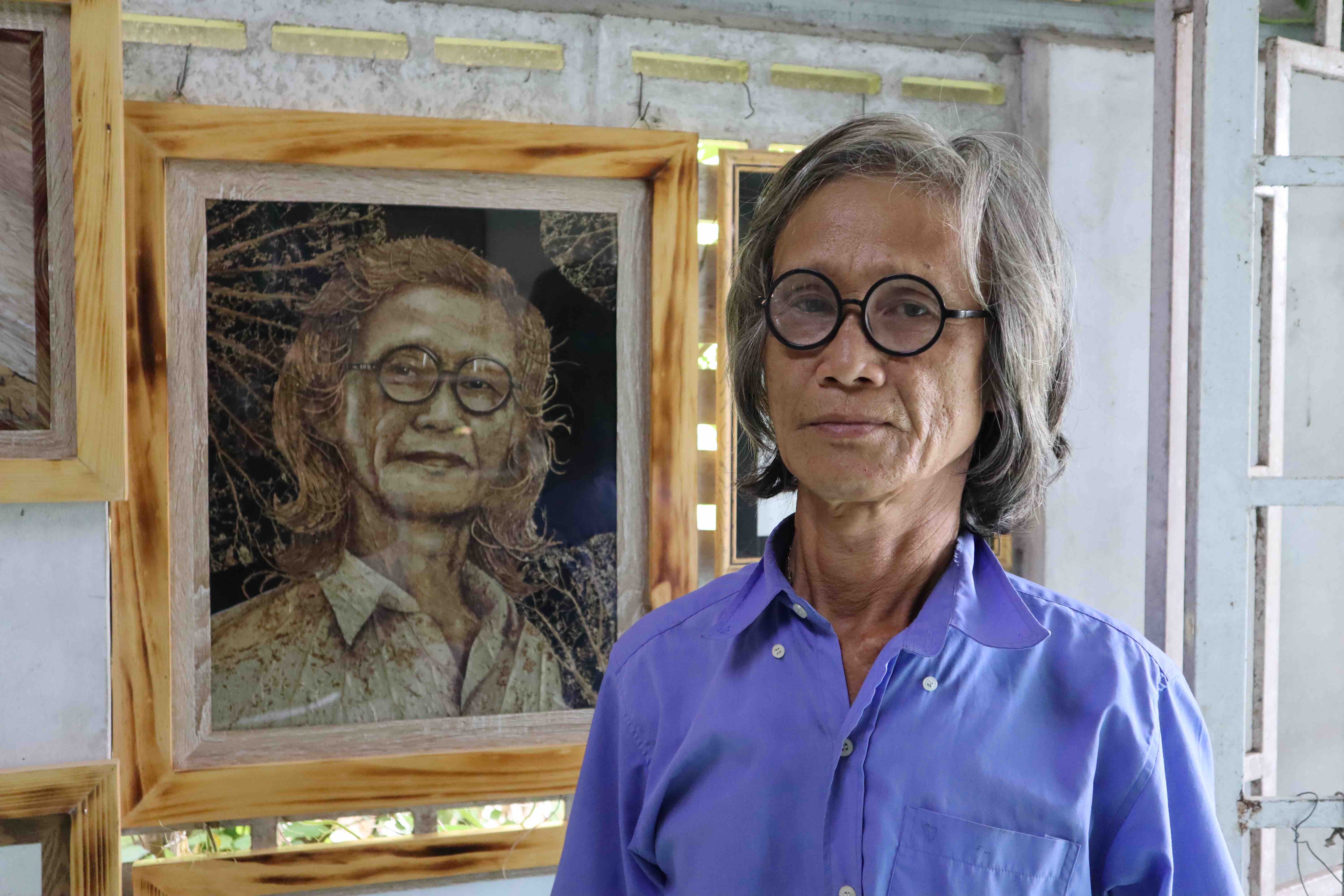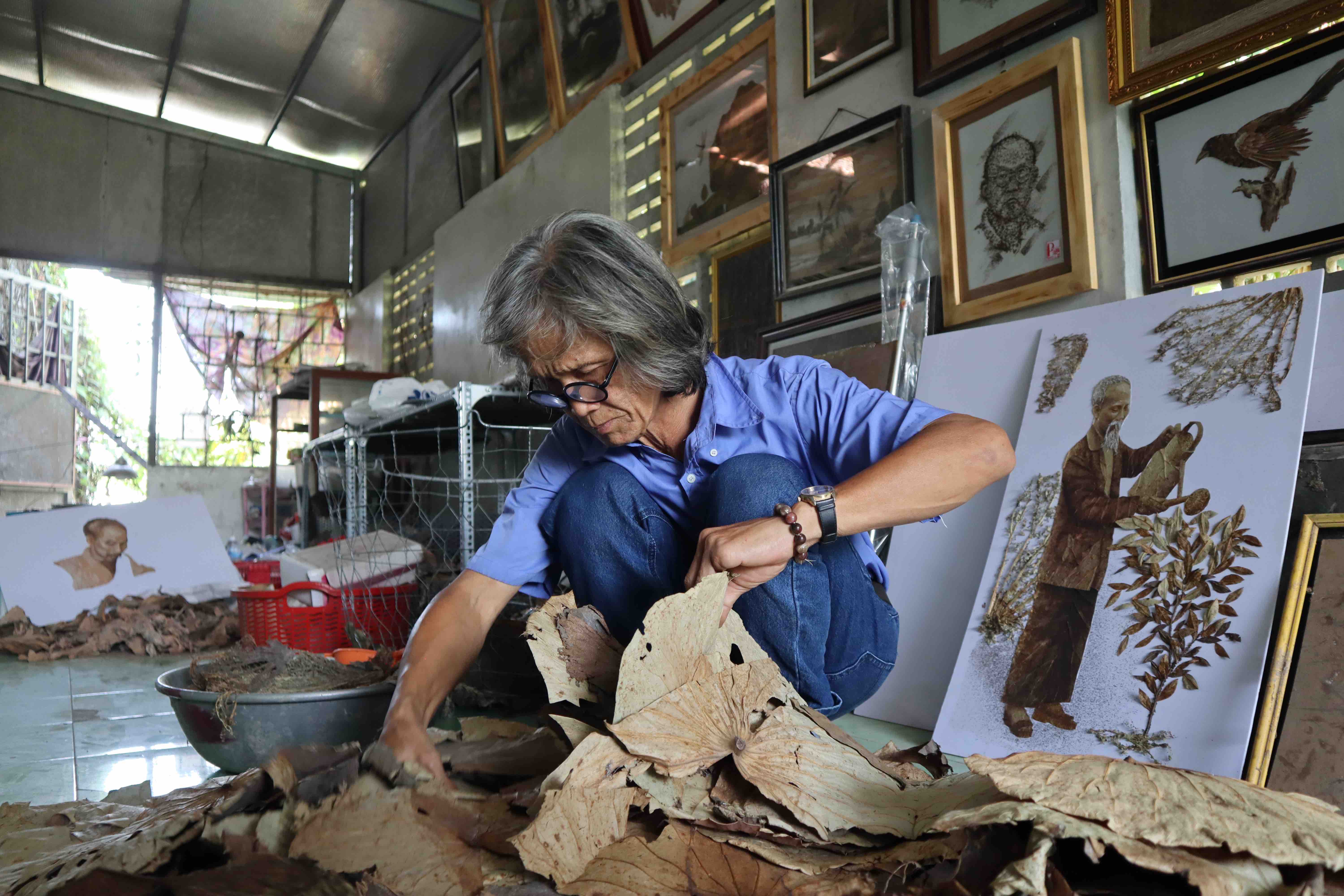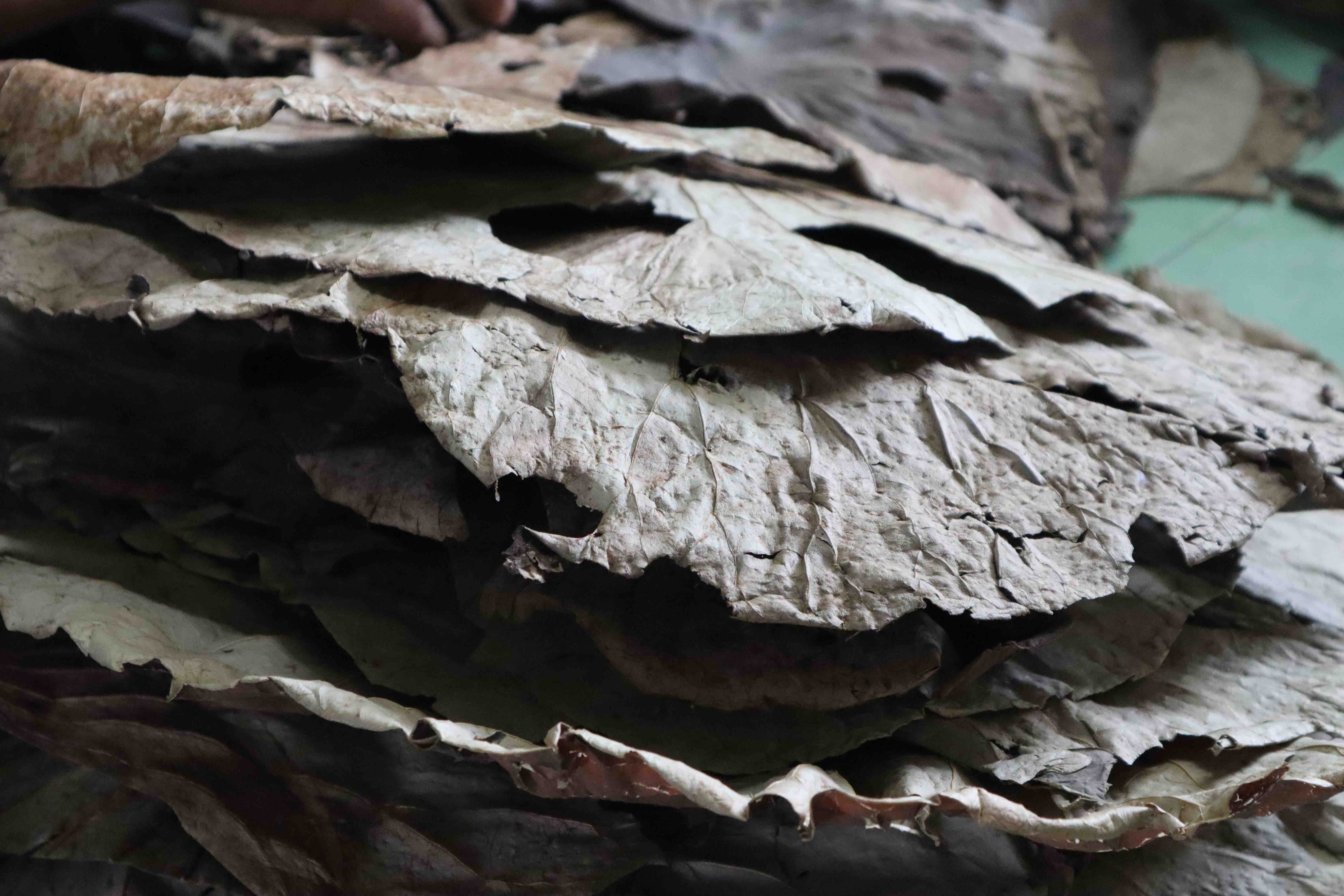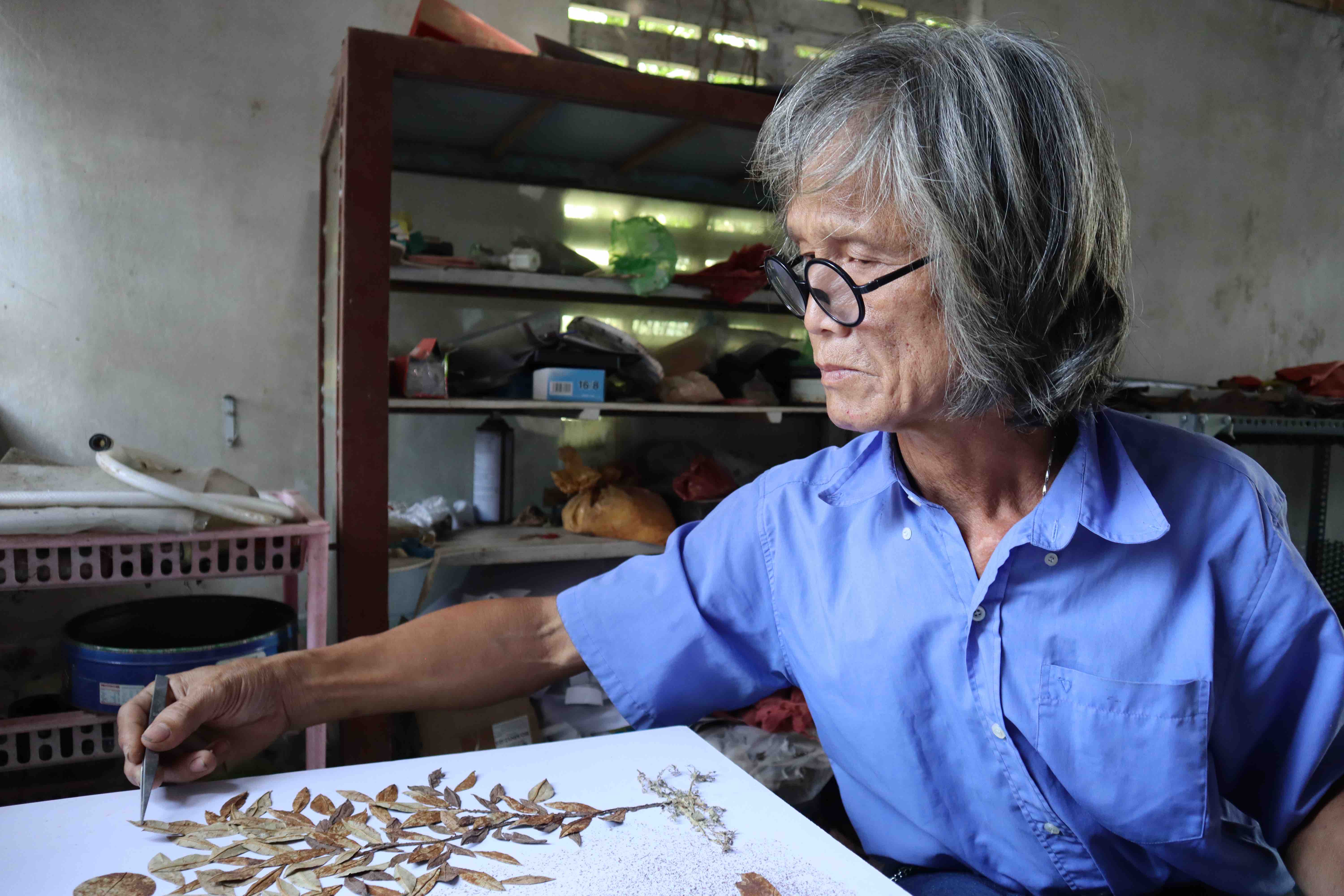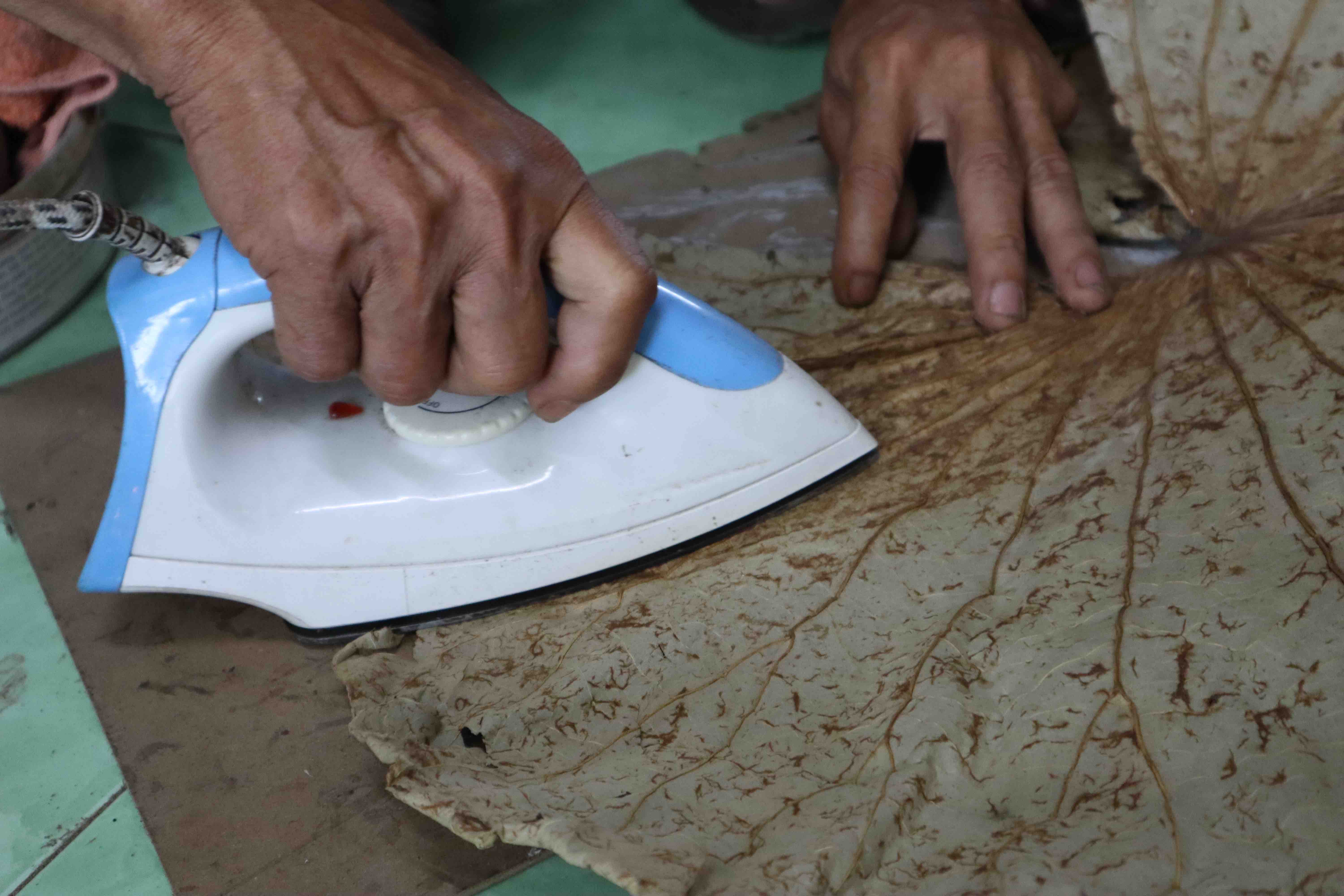A man from the southern Vietnamese province of Dong Thap is using art to share his love of lotus flowers with the world.
Dong Thap, known as Vietnam’s magical ‘land of lotus,' has earned its nickname thanks to the lotus ponds that cover the province, inspiring nature loves and artists alike.
One of these artists is 62-year-old Le Van Nghia, a former carpenter who left his career behind to follow his dream of making art.
|
|
| Le Van Nghia and a portrait of himself, made using lotus leaves in Dong Thap Province, Vietnam. Photo: Nam Vuong / Tuoi Tre |
Nghia, known amongst his friends as Bay Nghia, had no formal training in art.
Instead, he began his career by experimenting with creating visuals from the outer layers of paperbark trees before deciding to switch to a medium that would better represent both himself and his hometown: the lotus.
“I decided to use lotus leaves, a gift that nature has given Dong Thap, to make art because it will help me make my hometown known to the world,” Nghia told Tuoi Tre (Youth)newspaper.
The learning curve with using lotus leaves as a medium, however, proved to be tricky.
When Nghia first switched to lotus, his biggest struggle was how to process the leaves in a way that would avoid deformation and mold.
|
|
| Le Van Nghia processes lotus leaves at his workshop in Dong Thap Province, southern Vietnam. Photo: Nam Vuong / Tuoi Tre |
“In the early stages, I had to discard many pieces because the color would change as they aged,” Nghia said.
Eventually he found a solution -- only using mature and thick dark-green leaves with strong stems which can easily maintain their original shapes after being processed and dried in the sun.
It takes at least eight steps to make lotus art, including choosing, drying, cutting, and ironing the lotus leaves; sketching the piece; and sorting the leaves by color.
The final steps involve covering the leaves with glue and attaching them to the sketch, spraying insect repellent to prevent mold, and framing the final product.
|
|
| Dried lotus leaves, the medium to make lotus leaf paintings, are seen at Le Van Nghia's workshop in Dong Thap Province, southern Vietnam. Photo: Nam Vuong / Tuoi Tre |
Picked lotus leaves must be exposed to heat by day and frost by night.
If the weather is sunny enough, it only takes seven days to dry the leaves.
Without sunlight, it can take 10 to 15 days.
After the drying process, the leaves must be cut and ironed.
During the ironing process, the artist must be meticulous because if too much pressure is applied, the veins will not pop.
If too little pressure is applied, the leaves will shrink.
The most difficult step is drafting and shaping each piece.
Depending on the shape of the picture, Nghia chooses materials such as leaf veins, leaf arrays, or lotus leaf fragments to fit the piece.
|
|
| Le Van Nghia works on a new piece at his workshop in Dong Thap Province, southern Vietnam. Photo: Nam Vuong / Tuoi Tre |
“The struggle with this art form is that I can’t sketch much," Nghia said.
"I can only stick the leaf or the leaf vein directly to the paintings.
"Once stuck, it can’t be removed, otherwise it will tear.
"I can only sketch in my imagination and shape the patterns on paper.”
A single piece can take three to 15 days to complete.
Though lotus art is not as colorful as other media, Nghia has made an impact on the local art scene due to his simplistic use of white, yellow, brown, and dark brown.
|
|
| Le Van Nghia irons a lotus leaf in Dong Thap Province, southern Vietnam. Photo: Nam Vuong / Tuoi Tre |
Like us on Facebook or follow us on Twitter to get the latest news about Vietnam!



